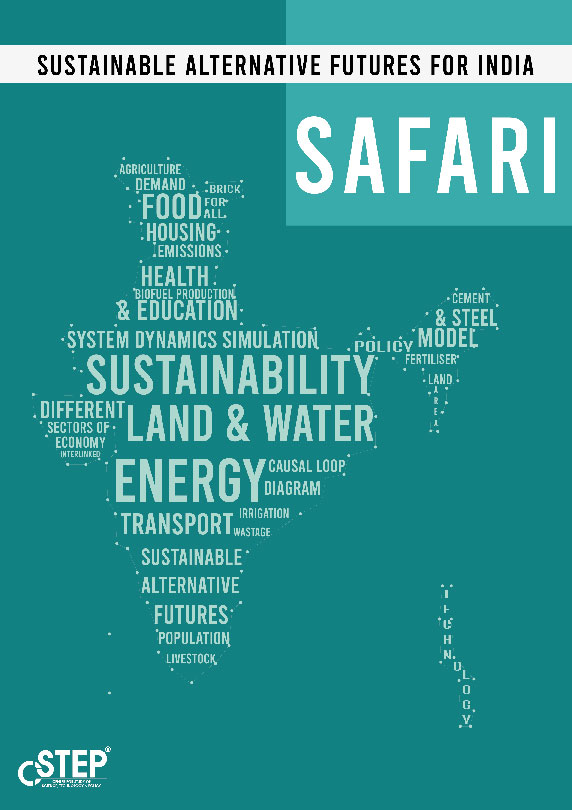Climate change mitigation involves strategies aimed at decreasing greenhouse gas emissions, promoting renewable energy sources, improving energy efficiency, and implementing sustainable practices. CSTEP focuses on building models to simulate India's future across sectors, such as transport, industries, buildings, agriculture, and forestry, to find interventions required to achieve a sustainable and secure future. Our work also involves the study of certain themes that cut across sectors (quality of life and development vs climate action, water and land demands for agriculture vs power, etc).
CSTEP's SAFARI model: Balancing development with climate action requires a good understanding of the interactions between sectors, natural resource systems, and environmental externalities. The Climate Change Mitigation at CSTEP has undertaken a modelling study with the aim to provide such an understanding and help create scenarios for low-carbon development through the use of an interactive simulation tool called Sustainable Alternative Futures for India (SAFARI). You can access the tool here.
SAFARI estimates the energy, emissions, and resources implications of achieving developmental goals such as food, housing, healthcare, education, power for all, and transport up to 2050. The user interface allows you to explore these implications as well as the trade-offs between them. Using SAFARI, you can create integrated scenarios across sectors and test out the impact of policy choices on energy, emissions, and resources. Ultimately, we hope that this tool can be used to provide insights into developing and tracking India's long-term strategy (LTS) in line with the Paris Agreement. For more information, please contact safari@cstep.in



The Solar PV Market in India: Technical Progress and Opportunities
So far in this series, we discussed different aspects of India’s solar PV sector, including taxation, policies, and the journey towards sustainability. In this concluding piece, we focus on popular technologies, innovations, challenges, and opportunities.
The Solar PV Market in India: Bridging the Gaps
India’s solar photovoltaics (PV) market is rapidly growing. However, to reach the ambitious goal of 500 GW of renewable energy by 2030, there is a pressing need to increase installed capacity and generation targets. With only around 62 GW of installed solar capacity achieved by the end of 2022, India fell short of its 100 GW target for the year. Favourable policies, financial support, technological advancements, and a competitive market are essential for further advancing the growth of India’s solar PV sector.
The Solar PV Market in India: Decoding ALMM and BCD
In the previous article, we discussed the gaps in key areas that hamper the sustained growth of India’s solar PV market. In this article, we shift our focus to two critical aspects that are influencing the sector - ALMM and BCD.
The complex path to biofuel sustainability
Until a few years ago, working on biofuels called for constant justification in the face of electric vehicles (EVs) taking over the world. Today, while there is no doubt that EV adoption has amplified over the years, there is growing awareness of the fact that no decarbonisation strategy is trade-off-free. For instance, for a transition to EVs, existing internal combustion engine (ICE) vehicles and the supporting infrastructure need to be replaced entirely, which is capital intensive.